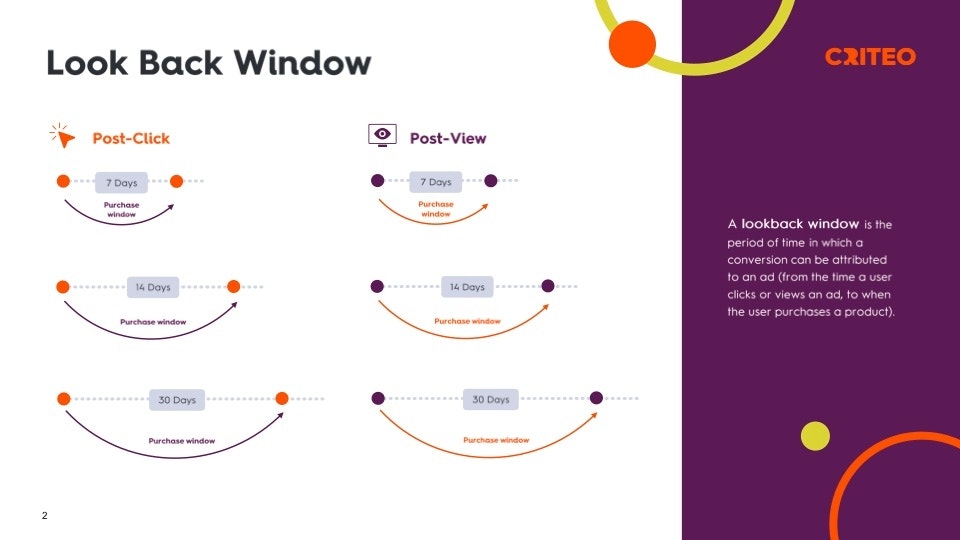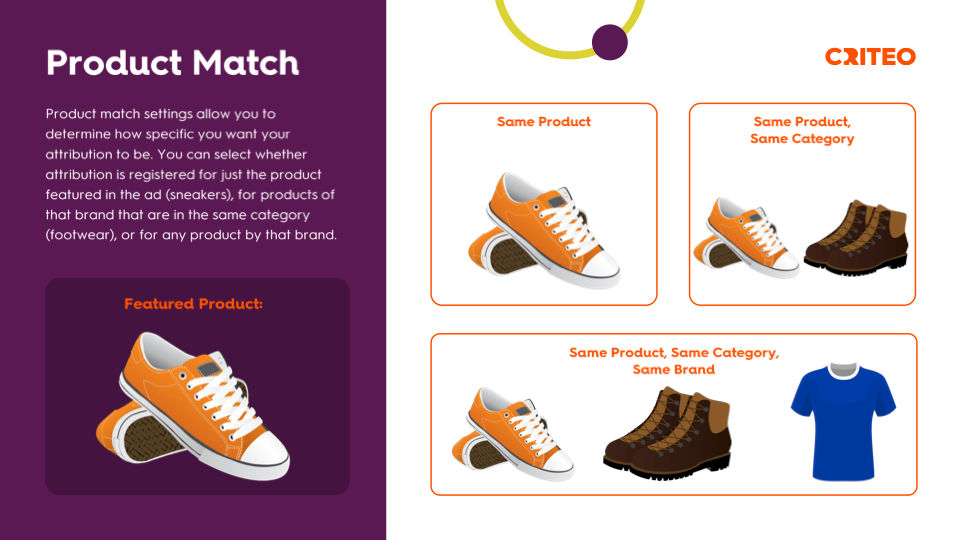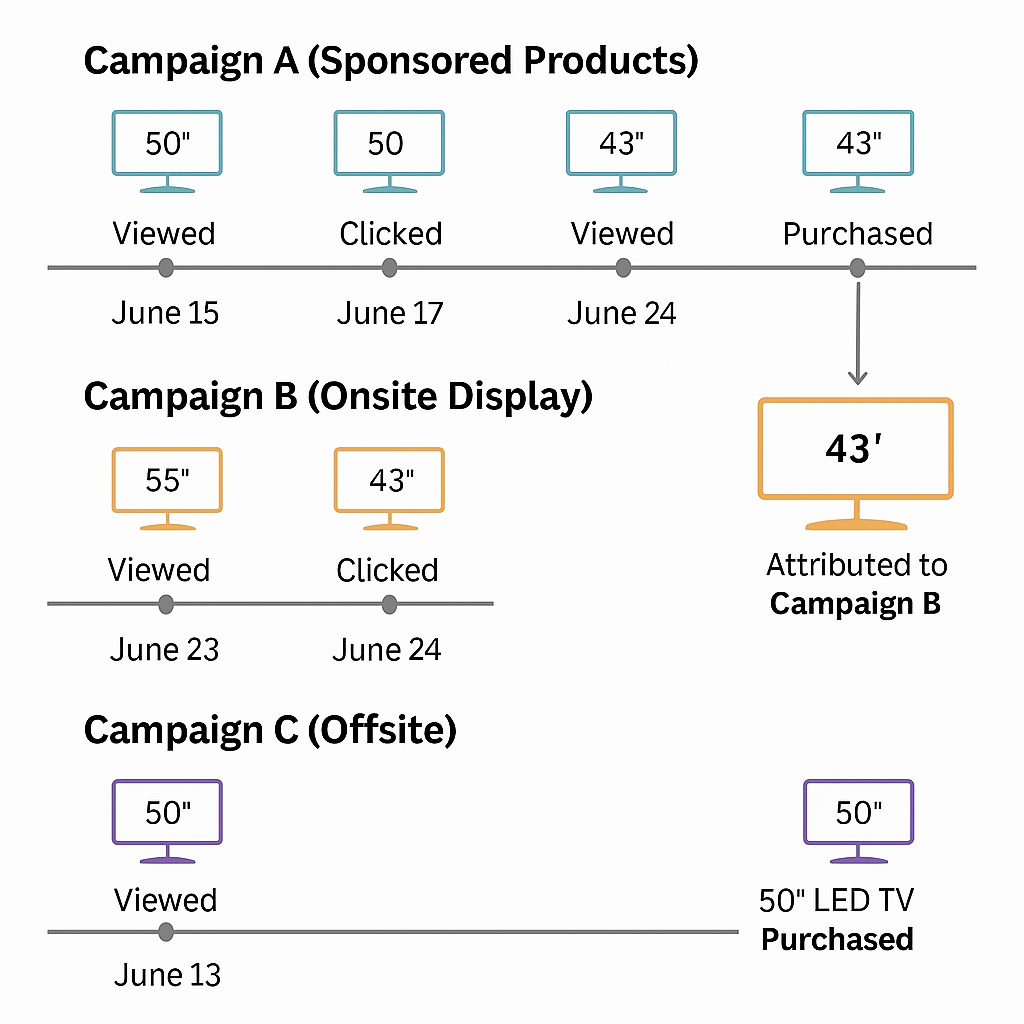



What is Attribution?
Attribution in retail media is the process through which one identifies which sets of actions led to the sale of a product. The Criteo Commerce Max measures sales attribution to determine what part of your retail media activity led to purchases by the shoppers that you reached.
Attribution data helps you understand which ads are driving conversions, optimize media spend, and justify campaign performance through measurable impact.
We measure retail media attribution in our internal reports through Attributed Sales and ROAS (Return on Advertising Spend) metrics.
Why it matters?
Measure campaign performance effectively: See which ads led to real sales.
Optimize media strategy: Understand what’s working and adjust your bidding, creatives, or placements accordingly.
Gain shopper insights: Learn how and when shoppers engage with your ads.
Retrospective updates: Update attribution models anytime with data auto-refresh.
Who is it for?
This feature is designed for advertisers and agencies who want to track and validate campaign effectiveness.
When to use it?
Use attribution settings when:
Launching new campaigns and choosing performance KPIs.
Testing different ad formats (Sponsored Products, Onsite Display, Offsite).
Comparing short vs. long purchase cycles (e.g., groceries vs. electronics).
Wanting to track the impact across online and offline sales.
Where to find it?
You can configure attribution settings when creating or editing a campaign or line item. Attribution settings can be found in the campaign setup workflow under the Attribution Model section. Selections made here apply to all performance reporting.
How it works?
Our attribution methodology is made up of three things:
User Matching: We only attribute purchases made by shoppers you've reached with your ad(s)
SKU Matching: We only attribute purchases of products that were related to your ad(s)
Look Back Window: We only attribute purchases made within a selected time after your ad was either clicked on or seen.
User Matching Rules
Criteo's Commerce Max Platform will rely on different user identifiers to determine whether a purchase is related to your ad(s) or not:
The retailer’s CRM ID
The retailer’s 1st-party cookie ID
The Criteo cookie ID
The Criteo X-device ID
Customer ID
Hashed Email
Retailer Visitor ID
Criteo Cookie
All of our user matching rules are purely deterministic. We never use IP addresses or probabilistic models to determine attribution at the user level.

Lookback Windows
The conversion cycle can be drastically different between a shopper buying groceries and a shopper buying a TV. Your ROAS measurement can also be different depending on your objectives (lower or upper funnel) and the type of ads that you are running.
As a result, in order to give you more flexibility, you can choose from the following options when setting up your campaign attribution model:
Post-click: 7, 14, 30 days
Post-view: None, 1, 7, 14, 30 days
In the beginning, we recommend that you set up an attribution window that you’re used to, in order to compare apples to apples. Then, as you turn on more campaigns, you can consider changing your model to see the impact of those changes.

Product Matching
The attribution model works differently for Demand Brand and Demand Seller accounts. It considers products as attributable if:
Demand Brand Accounts
Same Product
The same product as the one promoted in the ad is purchased by a shopper who was reached. We call this same product attribution.
Same Category
One of the products that is within the same category and brand as the promoted one is purchased by a shopper you’ve reached. We call this same category attribution.
Same Brand
Any product within the same brand as the promoted one is purchased by a shopper you've reached. We call this same brand attribution.

Demand Seller Accounts
Same Product
It refers to situations where the advertised product and the purchased product are exactly the same, and both are sold by the same advertising seller.
Same Category
It refers to cases where the advertised and purchased products are different but belong to the same product category, and both are sold by the same advertising seller.
Same Seller
It refers to situations where the advertised and purchased products are different and belong to different categories, but both are sold by the same advertising seller.

Sales Deduplication
A shopper’s journey can involve multiple advertising events (such as clicks and impressions) that lead to an eventual conversion to purchase. Sales deduplication means that a sales conversion is attributed once to a single advertising event (deduplication) rather than multiple events (duplication).
Commerce Max's attribution model ensures that this single attributed event is the most relevant event that led to the purchase. Any other events that led to the purchase are considered assisted sales (scroll down to Attribution Metrics to view Assisted Sales).
Sales are deduplicated across all accounts, campaigns, and line items within Commerce Max, as well as across all buy types, even if the same SKU is being advertised in offsite, onsite display, and sponsored products.
For example, if you’re running Sponsored Products and an Onsite Display campaign, both with multiple line items using the same SKUs, only one of the two campaigns will attribute a sale depending on the hierarchy below:
Clicks take precedence over impressions.
Same SKU events take precedence over Same Category events.
If SKU events (click or view) and user events (same product, same category, and same brand) yield the same characteristics, then the event that is closest to the time of purchase takes precedence.
